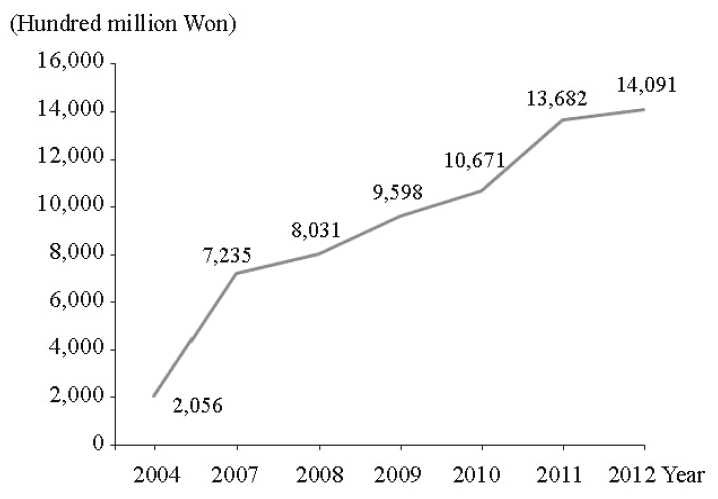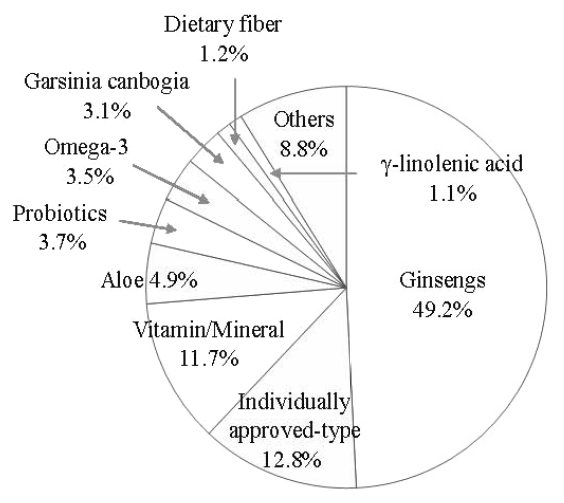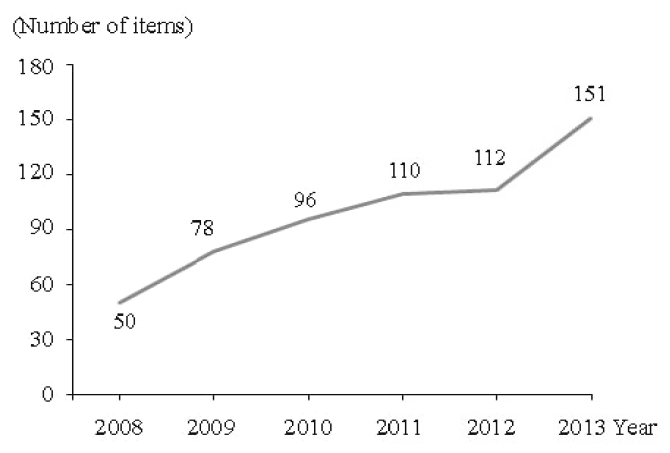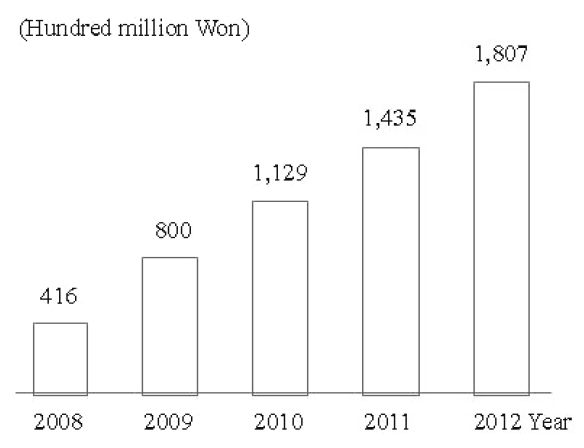References
1. Shimizu T. Health claims on functional foods: The Japanese regulations and an international comparison. Nutr Research Review 2003;16:241–52.
2. Thomas PR, Earl R, et al. Committee on Opportunities in the Nutrition and Food Sciences, Institute of Medicine: research challenges and the next generation of investigators Washington, DC: National Academy Press; 1994. p. 109.
3. Kim SH. A Survey on the Use of and Significant Variables for Health Functional Foods Among Korean Elderly. Korean J Food Culture 2011;26(1):30–8.
4. Park SC, Oh MY, Kim HS. A Study on usage of health improving agents in Seoul & Busan. J Korean Diet Assoc 2005;11(4):440–8.
6. Korean Ministry of Food and Drug Safety. Analysis Report for Annual Production of Functional Foods in 2012 2013;:1–7.
7. Health Insurance Review and Assessment Service. 2012. National Health Insurance Statistical Yearbook 2013. p. 176.
9. Moon JS. Study on Strategics of Health Food Industry. Korean Health Industry Development Institute 2004;:12–3.
10. Imfact, 2013 Market Report for Functional Foods and their Materials. Seoul. 2013:65–8.
11. Takata H, Kaneda F, Suguro R, Baba H. Current System for Regulation of Health Foods in Japan. JMAJ 2004;47(9):436–50.
12. Ross S. Functional foods: the Food and Drug Administration perspective. Am J Clin Nutr 2000;71(6):1735s–8s.
13. Sibbald B. Health Canada leery as US “nutraceutical” movement prepares to move north. CMAJ 1999;161(6):742.
14. Fitzpatrick KC. Regulatory issues related to functional foods and natural health products in Canada: possible implications for manufacturers of conjugated linoleic acid. Am J Clin Nutr 2004;79(6 Suppl):1217S–20S.
15. Um IY, Jeon HJ. Industrial Analysis Report for Functional Foods Foundation Agri Commercialization and Transfer 2013;:14–6.
17. Busan National University School of Korean Medicine. 2012. Year book of Traditional Korean Medicine Daejeon: Kumkang press; 2014. p. 233.
18. Sobradillo P, Pozo F, Agusti A. P4 medicine: the future around the corner. Arch Bronconeumol 2011;47(1):35–40.
19. Cheon CH, Park JS, Park SJ, Kweon KT, Shin YC, Ko SG. Necessity of Adverse Event Reporting System through the Trend of Internet News about Safety of Herbal. Kor. J Oriental Preventive Medical Society 2011;15(2):131–43.
20. Hwang WM, Kim MH, Yun GR, Lee GB, Go JM, Kim YH. A study on safety of functional healths foods. Kor. J. Vet Serv 2008;31(2):239–54.
21. Kang EJ, Kim JY, Kwon OR, Kim MC, Kim GH. A Study on Labeling Regulation for Reliability and Understanding Improvement of Health Functional Food. J Food Hyg. Safety 2008;23(1):51–61.
22. Choi MK, Kim HG, Wang JH, Son CG. The Application of High Performance Thin Layer Chromatography for Herbal Formula Standardization. J Korean Med 2011;32(4):68–7.
23. Kim MK, Jung JH, Min DL, Lee HJ, Park EJ. Study to Examine the Awareness of the Parents, whose Children are Attending an Elementary School in Gyeonggi-do, on Herbal Medication and Health Functional Food. J Pediatr Korean Med. November 2011;25(1):111–8.
25. Choi JH, You CH, Kwon YD. Effects of Health-related Factors on the Use of Health Functional Foods. Korean J Health Service Management 2011;5(4):27–39.
26. Ohn J, Kim JH. Intake Pattern and Needs Assessment for the Development of Web-Contents on Health Functional Foods according to Age of Adults. Korean J Community Nutr 2012;17(1):26–3.



